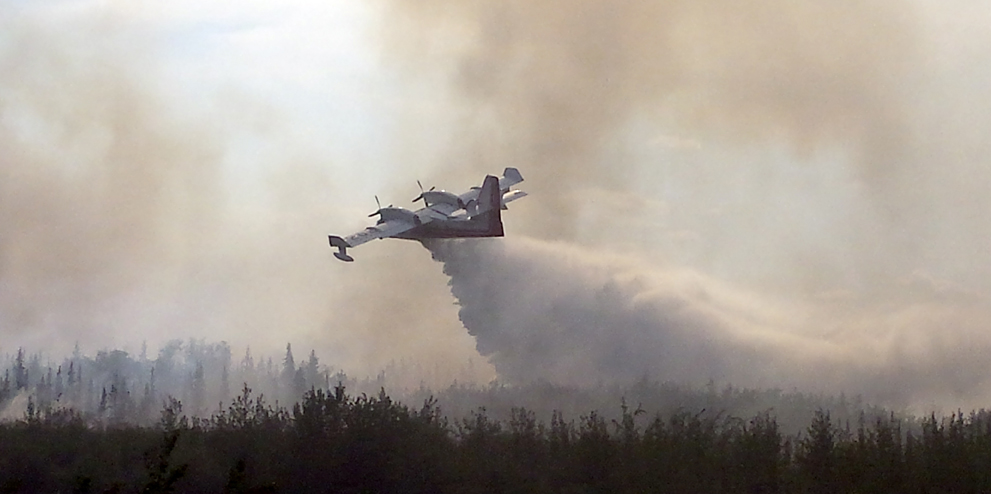ANCHORAGE — A year after Alaska wildfires burned an area larger than Massachusetts, the state is on course for a mild fire year in 2016.
Alaska on Sunday passed its unofficial “conversion date,” when the wildfire season begins to wind down and fire officials offer underused assets such as fire crews and water-scooping aircraft to other states or Canada.
A typical Alaska fire season is a million or two acres burned and last year saw 7,969 square miles, or 5.1 million acres, scorched. As of Wednesday morning, just 217 square miles, fewer than 139,000 acres, had burned in 2016.
“Last year at this point we were closing in on 4.2 million acres,” said Tim Mowry, spokesman for the Alaska Interagency Coordination Center in Fairbanks.
State and federal firefighters moved quickly to limit the state’s 370 fires, Mowry said, but that doesn’t explain a 4-million acre difference, he said. Fortuitous weather is a better explanation.
“The weather has been such that it just hasn’t been conducive to getting the ignitions and having those fires persist like they did last year,” Mowry said.
Memorial Day Weekend was hot and dry. The weather since has lacked extended dry periods. In much of the state, high pressure has been followed by low pressure carrying precipitation.
“It’s been perfect for not getting fire starts,” Mowry said.
Last year was drier. The season kicked off with fires near Willow and on the Kenai Peninsula that burned less than 13 square miles each. However, they consumed homes and required hundreds of firefighting personnel to keep them from causing additional damage.
Activity got busier last summer during a memorable week of lightning strikes. From June 17-21, Alaska recorded 60,000 lightning strikes that lit 295 fires. That’s too much fire to deal with, Mowry said. Fires were ranked and resources poured into the ones with the highest priority.
“We were just chasing our tail for the tail for the rest of the summer because there was so much fire,” he said.
Fires in 2016 have paced themselves.
“This year, it’s seems like we’ve had one fire at a time,” Mowry said.
Fire season in Alaska is typically busiest in late May and June. In a typical year, things change after July 10.
“That denotes when things start to wind down, or when the weather pattern changes,” he said.
Alaska starts to get a southwest flow of air, bringing moisture from the North Pacific. The likelihood of wildlands igniting, or of fire persisting, is reduced, Mowry said.
“We’re losing daylight every day now. The burning period is reduced every day now because of that. Temperatures typically are not as warm. We’re getting dew at night,” he said.
Anticipating a slowdown, Alaska is offering to other states an air tanker that can drop retardant. Given the state’s budget woes, the Division of Forestry would be happy to shift the daily lease cost of $55,000.
“We would like to do that if possible this year,” Mowry said, “because we’re in dire straits financially.”

